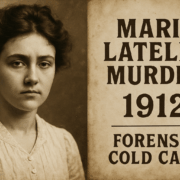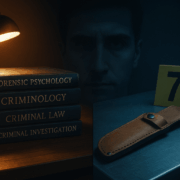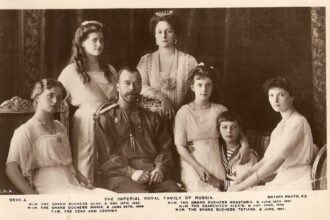In the small, devoutly Christian community of Koodathayi in Kerala, India, the Ponnamattom family was a picture of respectability and success. They were known as a well-educated, close-knit family, their lives interwoven with the rhythms of church and community. But beneath this placid surface, a silent, methodical evil was at work. Over a span of 14 years, from 2002 to 2016, six members of the extended family would die, one by one, their deaths attributed to heart attacks, choking, or other seemingly natural causes. The common thread in this chain of tragedy was one woman: Jolly Joseph, the family’s daughter-in-law, who was present at or near every death.
- Background: The Social and Contextual Crucible
- Timeline of a Tragedy: Fourteen Years of Poison
- The Forensic Crucible: Reconstructing the Crime
- The Elusive Poison: Forensic Toxicology
- Building a Case Without a Smoking Gun: Circumstantial Evidence
- A System on Trial: Legal Proceedings and Accountability
- Conclusion: Lessons from Koodathayi
- Over 14 years, six family members died. A facade of piety hid a pattern of poisoning. Forensic work pulled the thread.
- Jolly Joseph — the “Jolly Teacher” persona
- 14-year timeline of deaths
- 2002 — Annamma Thomas, 57 (mother-in-law)
- 2008 — Tom Thomas, 66 (father-in-law)
- 2011 — Roy Thomas, 40 (husband)
- 2014 — Mathew Manjadiyil, 68 (uncle-in-law)
- 2014 — Alphine Shaju, 2
- 2016 — Sily Shaju, 41
- How forensic work cracked it
- Where the case stands
The Koodathayi Cyanide Killings represent one of India’s most chilling and complex cases of serial murder, not for its overt violence, but for its patient, intimate cruelty. The investigation, launched years after the first death, posed a monumental forensic challenge: how to prove murder when the primary evidence Evidence is any form of proof, such as objects, materials, or scientific findings, presented to establish or disprove a fact in a legal proceeding. It is used to reconstruct events and link or exclude individuals Read Full Definition of the poison—cyanide—had likely vanished from the long-buried remains of the victims. This case study provides a definitive forensic and socio-legal analysis of the investigation, deconstructing how a cold case was cracked open by a single, crucial autopsyAn autopsy, also known as a post-mortem examination or necropsy (when performed on animals), is a thorough and systematic medical procedure that involves the examination of a deceased person's body, typically to determine or confirm Read Full Definition report and how the prosecution built its case on a foundation of circumstantial evidence, witness testimony, and the unravelling of a meticulously crafted web of lies.
Evidence is any form of proof, such as objects, materials, or scientific findings, presented to establish or disprove a fact in a legal proceeding. It is used to reconstruct events and link or exclude individuals Read Full Definition of the poison—cyanide—had likely vanished from the long-buried remains of the victims. This case study provides a definitive forensic and socio-legal analysis of the investigation, deconstructing how a cold case was cracked open by a single, crucial autopsyAn autopsy, also known as a post-mortem examination or necropsy (when performed on animals), is a thorough and systematic medical procedure that involves the examination of a deceased person's body, typically to determine or confirm Read Full Definition report and how the prosecution built its case on a foundation of circumstantial evidence, witness testimony, and the unravelling of a meticulously crafted web of lies.
Background: The Social and Contextual Crucible
Jolly Joseph married into the Ponnamattom family in 1997, wedding Roy Thomas, the son of retired teacher Annamma and education department officer Tom Thomas. The Ponnamattom family was highly regarded in Koodathayi, a status that Jolly, a college dropout from an agrarian background, reportedly felt keenly. To elevate her own standing, she constructed an elaborate fiction, convincing her new family and the entire community that she was a postgraduate commerce lecturer at the prestigious National Institute of Technology (NIT) in Calicut. For 14 years, she maintained this charade, leaving home each morning in her car with a forged NIT identity card, a respected “Jolly Teacher” in the eyes of the village.
This deep-seated deception was the psychological bedrock upon which the murders were built. Jolly’s motives, as later alleged Alleged is a term used in legal contexts to describe an accusation or claim that has been made against an individual but has not yet been proven or confirmed. Read Full Definition by investigators, were a toxic cocktail of greed, lust, and a pathological need for control. She sought to eliminate anyone who questioned her lies, stood in the way of her financial ambitions, or blocked her romantic pursuits. The murders were not random acts of rage but calculated steps in a long-term plan to seize the family’s property and remarry a man of her choosing.
Alleged is a term used in legal contexts to describe an accusation or claim that has been made against an individual but has not yet been proven or confirmed. Read Full Definition by investigators, were a toxic cocktail of greed, lust, and a pathological need for control. She sought to eliminate anyone who questioned her lies, stood in the way of her financial ambitions, or blocked her romantic pursuits. The murders were not random acts of rage but calculated steps in a long-term plan to seize the family’s property and remarry a man of her choosing.
Timeline of a Tragedy: Fourteen Years of Poison
The deaths were so spread out over time that they initially raised little suspicion, a testament to the killer’s patient and methodical approach.
| Date | Event | Key Details |
| Aug 22, 2002 | Death of Annamma Thomas (57) | Jolly’s mother-in-law, who had been pressuring her to find a job befitting her “qualifications,” collapses and dies after drinking mutton soup prepared by Jolly. The death is ruled a heart attack. |
| Aug 26, 2008 | Death of Tom Thomas (66) | Jolly’s father-in-law dies after collapsing. His death allows Jolly, using a forged will, to begin taking control of the family property. |
| Sept 30, 2011 | Death of Roy Thomas (40) | Jolly’s husband is found dead in a locked bathroom. Despite Jolly’s claims of a heart attack, his uncle, Mathew Manjadiyil, insists on a post-mortem. The autopsy reveals death by cyanide poisoning, but the case is closed as a suicide. |
| Feb 24, 2014 | Death of Mathew Manjadiyil (68) | Roy’s uncle, who had been the most vocal about the suspicious nature of Roy’s death, collapses and dies after Jolly allegedly gives him poison-laced whisky. |
| May 3, 2014 | Death of Alphine Shaju (2) | The two-year-old daughter of Shaju Zachariah (Roy’s cousin and Jolly’s future husband) dies after reportedly “choking on food” while in Jolly’s presence. |
| Jan 11, 2016 | Death of Sily Shaju (41) | Shaju’s wife collapses and dies violently in Jolly’s lap at a dental clinic after Jolly gives her a “mushroom capsule” and water. |
| 2018 – 2019 | The Investigation Begins | Roy’s US-based brother, Rojo Thomas, obtains a copy of the 2011 autopsy report and discovers discrepancies in Jolly’s account. He files a complaint, prompting a new investigation. |
| Oct 5, 2019 | The Arrest | After exhuming the bodies, police arrest Jolly Joseph. She confesses to the six murders and implicates two accomplices, M.S. Mathew and Praji Kumar, who helped procure the cyanide. |
The Forensic Crucible: Reconstructing the Crime
With most of the victims buried for years without an autopsy, the central challenge for investigators was proving murder when the primary evidence—the poison—had likely degraded beyond detection. The prosecution’s case became a masterclass in leveraging a single piece of solid forensic toxicology and building an overwhelming case from circumstantial evidence.
The Elusive Poison: Forensic Toxicology
Cyanide is a notoriously difficult poison to detect in post-mortem investigations, especially after significant decomposition. It is a highly volatileIn scientific and chemical contexts, the term "volatile" describes a substance that has the propensity to evaporate or change from a liquid state to a gaseous state readily at normal or room temperatures. Volatility is Read Full Definition and reactive chemical that is rapidly metabolized by the body and disintegrates quickly after death, a process accelerated by environmental factors like temperature and soil contact.
Building a Case Without a Smoking Gun: Circumstantial Evidence
With direct toxicological proof absent for four victims, the prosecution had to construct an “unbroken chain of circumstances” that pointed unequivocally to Jolly’s guilt.
A System on Trial: Legal Proceedings and Accountability
Following her arrest in October 2019, Jolly Joseph was charged in six separate cases for each of the murders. The investigation culminated in thousands of pages of chargesheets, naming over 150 witnesses for the Roy Thomas case alone. The trial process has been slow, hampered by the COVID-19 pandemic and numerous legal petitions from the defense.
The defense has focused on the lack of direct scientific evidence in four of the deaths, arguing that the negative CFSL reports are a major blow to the prosecution’s case. However, the prosecution maintains that the combination of the two positive cyanide reports, Jolly’s confession, the testimony of her accomplices, and the overwhelming circumstantial evidence is sufficient for a conviction.
As of August 2025, the trial in the Roy Thomas murder case is actively proceeding, with 124 prosecution witnesses having been examined. The case has also sparked significant media attention, including a Netflix documentary, “Curry & Cyanide,” which drew criticism from some forensic experts for potentially influencing witnesses before their testimony.
Conclusion: Lessons from Koodathayi
The Koodathayi Cyanide Killings serve as a chilling reminder that the most monstrous acts can be hidden behind a facade of normality. For 14 years, Jolly Joseph played the part of a pious, friendly, and respectable woman, all while methodically eliminating her family members to satisfy her desires for wealth, power, and love.
Forensically, this case is a powerful lesson in the limitations and resilience of science. It demonstrates the immense difficulty of proving poisoning after years of decomposition, highlighting the critical importance of conducting autopsies in all cases of sudden, unexplained death. Simultaneously, it showcases how a single, solid piece of toxicological evidence can become the cornerstone that allows investigators to re-examine past events and connect the dots. Ultimately, the Koodathayi investigation is a testament to the power of building a case on a meticulous foundation of circumstantial evidence, where the pattern of behavior, the web of lies, and the testimony of those left behind can be just as damning as a laboratory report. The trial is ongoing, but the forensic and investigative work has already unmasked the killer who hid in plain sight for over a decade.

The Koodathayi Cyanide Killings
Over 14 years, six family members died. A facade of piety hid a pattern of poisoning. Forensic work pulled the thread.
Section 1
Jolly Joseph — the “Jolly Teacher” persona
Section 2
14-year timeline of deaths
2002 — Annamma Thomas, 57 (mother-in-law)
2008 — Tom Thomas, 66 (father-in-law)
2011 — Roy Thomas, 40 (husband)
2014 — Mathew Manjadiyil, 68 (uncle-in-law)
2014 — Alphine Shaju, 2
2016 — Sily Shaju, 41
Section 3
How forensic work cracked it
Section 4













